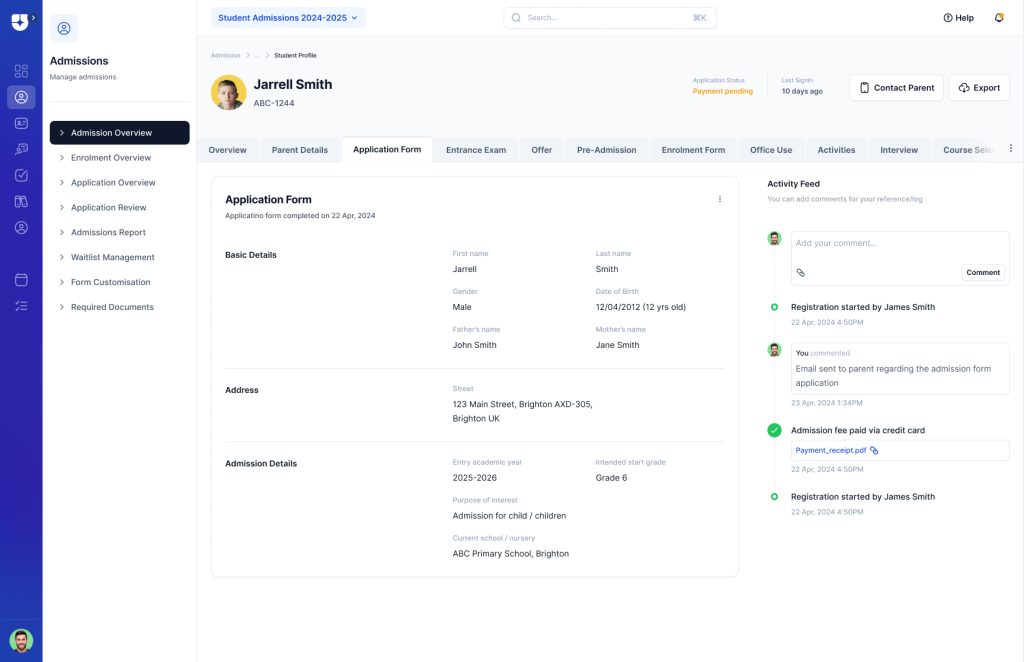
Introduction
Innovation & tradition in schools is a balance that school leadership must constantly navigate. At iScuela, we have worked alongside hundreds of schools, supporting school leaders, principals, administrators, and school owners through complex educational landscapes. One challenge that consistently emerges is the need to honor traditional educational leadership values while embracing innovation. This balance is crucial not only for the academic success of pupils but also for the long-term sustainability of schools. In this article, we outline actionable school leadership strategies for maintaining this balance—strategies that have empowered schools to thrive both culturally and academically.
The Importance of Balancing Tradition and Innovation in School Leadership

From our work with diverse institutions, it is clear that school leadership in the 21st century must honour the foundational principles that have historically guided education, while also embracing advancements that enhance learning and operational efficiency. Balancing tradition and innovation in schools ensures schools remain culturally rich and academically competitive.
Understanding the Core of Traditional Education
Traditional education practices instil stability, identity, and community. Through structured curriculums, long-standing cultural celebrations, and heritage-based rituals, schools cultivate character and continuity. Our experience shows that successful school leadership preserves these traditions to anchor pupils and staff, fostering a cohesive school culture.
Why School Innovation Is No Longer Optional
In parallel, school innovation is critical for relevance in today’s fast-evolving world. Technologies such as AI-driven learning platforms, blended learning models, and global citizenship curricula redefine pupil engagement. Through our educational change management consulting, we guide schools in adopting innovations that meet modern educational standards while maintaining institutional integrity.
7 School Leadership Strategies for Balancing Innovation and Tradition

In today’s fast-changing educational landscape, school leaders face the unique challenge of embracing innovation while staying true to the traditions and values that define their institution’s identity. Striking this balance is essential—not only for maintaining a sense of continuity but also for preparing students for an evolving world. The following seven school leadership strategies for balancing tradition and innovation can guide school leadership teams in navigating this delicate equilibrium.
1. Preserve Core Values While Modernising Pedagogy
Our recommended school leadership strategies start with identifying and safeguarding a school’s mission and core values. Schools can integrate modern instructional practices, such as enquiry-based learning and digital tools, while remaining grounded in their foundational ethos.
2. Empower Teachers as Agents of Change
We consistently advise schools to prioritise school leadership development among teachers. By equipping educators with the skills and confidence to innovate within their classrooms, schools position themselves for sustainable growth. Collaborative training and professional learning communities are effective models.
3. Involve Stakeholders in School Innovation Decisions
Effective school administration hinges on inclusivity. Schools we support involve parents, pupils, alumni, and faculty when contemplating innovations. This engagement fosters shared ownership, enhances transparency, and ensures decisions reflect the collective aspirations of the school community.
4. Leverage Data-Driven Decision Making Without Losing the Human Touch
Using data analytics to inform school policy, curricular shifts, and operational efficiencies is central to our school leadership for innovation framework. However, we emphasise balancing data insights with empathy and stakeholder feedback to maintain a pupil-centred focus.
5. Create a Culture of Continuous Improvement Rooted in Tradition
We help schools build systems where reflective practices, feedback loops, and after-action reviews guide continuous improvement. These practices ensure innovations align with the school’s traditions, forming a hallmark of effective school leadership approaches to innovation and tradition.
6. Balance Risk-Taking with Responsible School Governance
Innovation involves measured risks. Through robust governance models and clear accountability structures, schools can mitigate potential downsides while pursuing progressive initiatives. This balance characterises resilient school leadership models for innovation and tradition.
7. Foster Reflective Practices Across Your School Community
Our consulting methodology often includes guided reflection sessions, helping school leaders and educators assess how innovations align with traditions and whether course adjustments are necessary. Such reflective practices are vital in robust school leadership frameworks for innovation and tradition.
School Leadership Best Practices: Insights from Our Fieldwork
Over the years, iScuela has observed that the most effective school principal leadership emerges from institutions that maintain equilibrium. For example, we’ve partnered with schools that introduced STEM innovation labs while continuing annual cultural heritage fairs, blending the best of both worlds. These schools reported increased pupil engagement, stakeholder satisfaction, and institutional longevity.
Navigating School Leadership Challenges in Balancing Both Worlds
Through extensive consultations, we have identified recurrent school leadership challenges schools face, including resistance to change, limited financial resources, and stakeholder apprehension. Our educational change management approach addresses these through:
• Stakeholder alignment workshops
• Phased innovation rollouts
• Continuous communication strategies
• Capacity-building programmes for leadership teams
Conclusion: Leading Schools into a Thriving Future

At iScuela, we believe that balancing tradition and innovation in schools is not a trade-off but a strategic integration. Schools that master this balance position themselves to nurture well-rounded pupils, honour their heritage, and adapt effectively to future demands. By applying these school leadership strategies, schools ensure they remain vibrant, relevant, and resilient for generations to come.
FAQs
1. What is the role of school leadership in balancing tradition and innovation?
School leadership guides the strategic integration of heritage values and modern practices to foster holistic school environments.
2. Why is tradition important in school leadership?
Traditional education anchors school identity, providing cultural continuity and ethical frameworks for learning communities.
3. How can schools introduce innovation without discarding traditions?
By aligning new initiatives with the school’s mission, involving stakeholders, and preserving core values alongside modern methods.
4. What are common challenges in balancing tradition and innovation in schools?
Resistance to change, budget constraints, and stakeholder concerns are key school leadership challenges we help schools navigate.
5. How does school innovation benefit pupils?
School innovation enhances engagement, develops modern competencies, and prepares pupils for evolving career landscapes.

